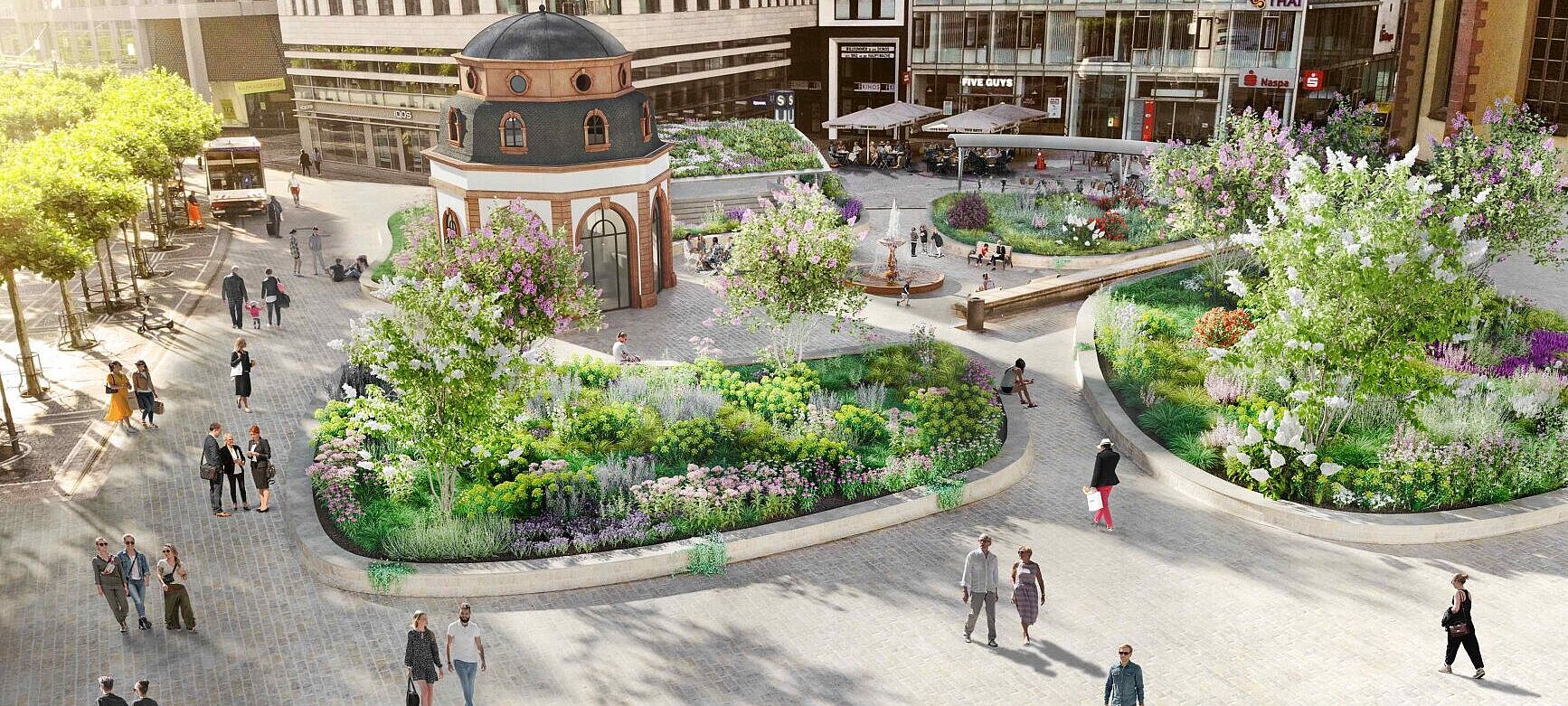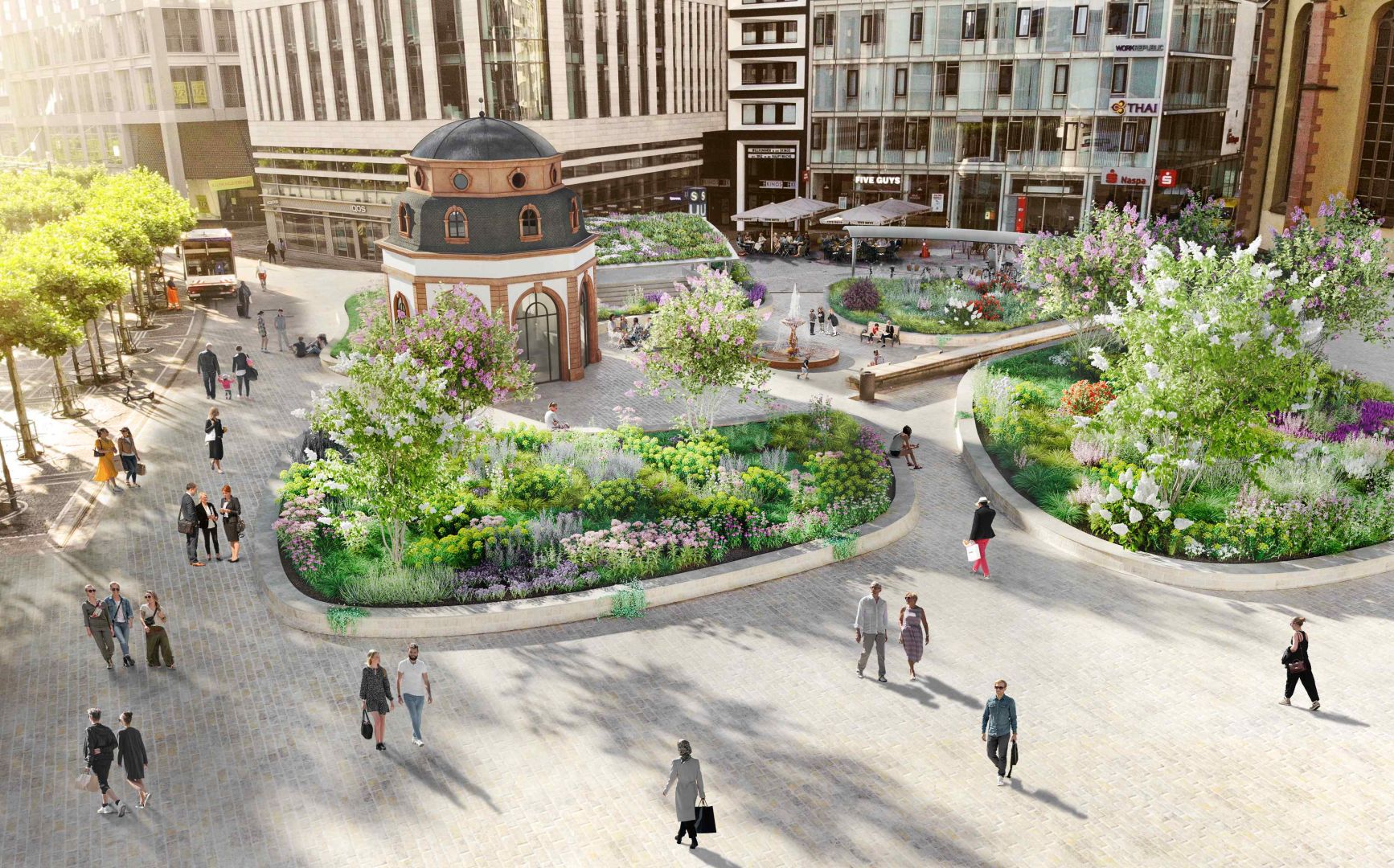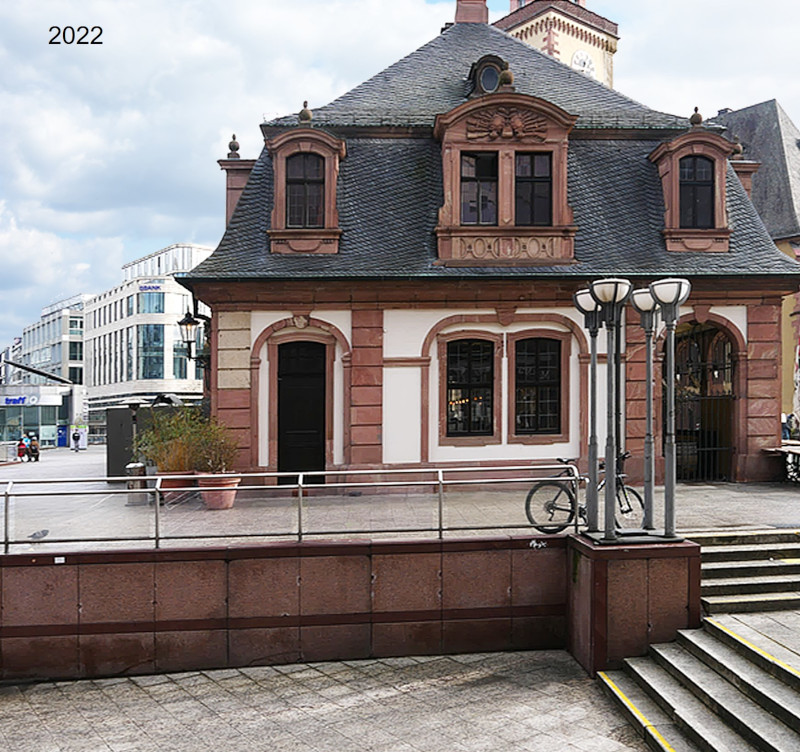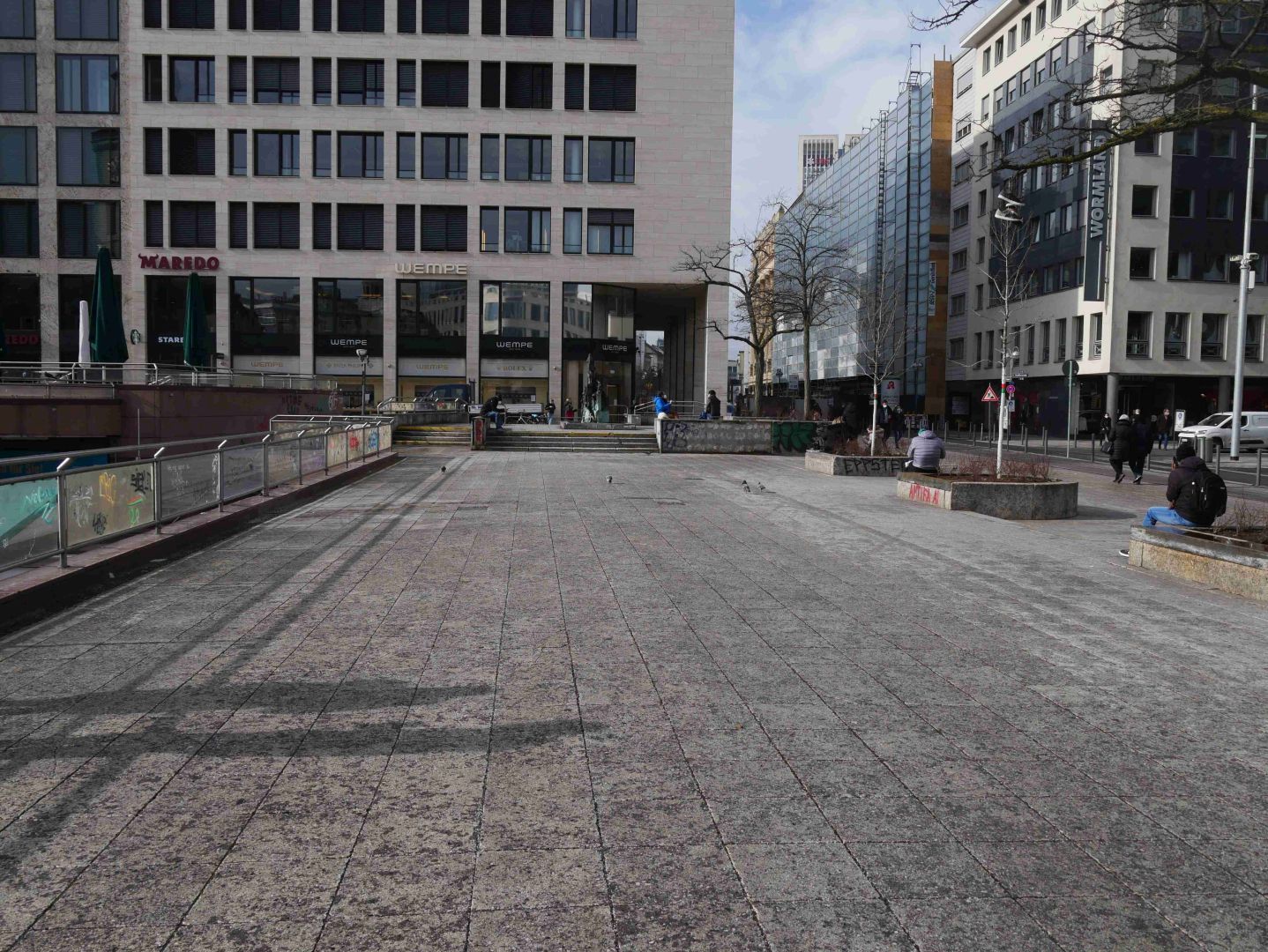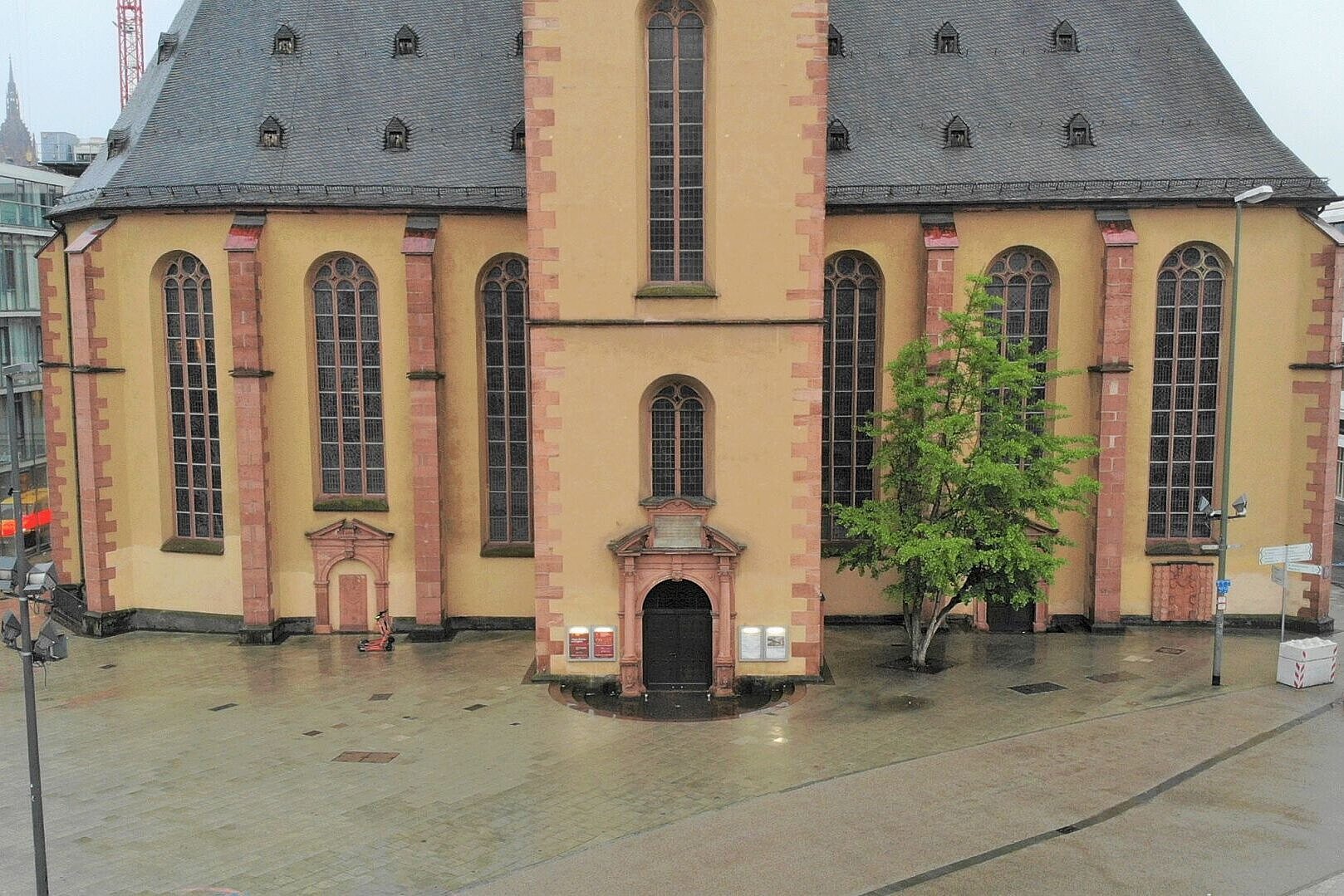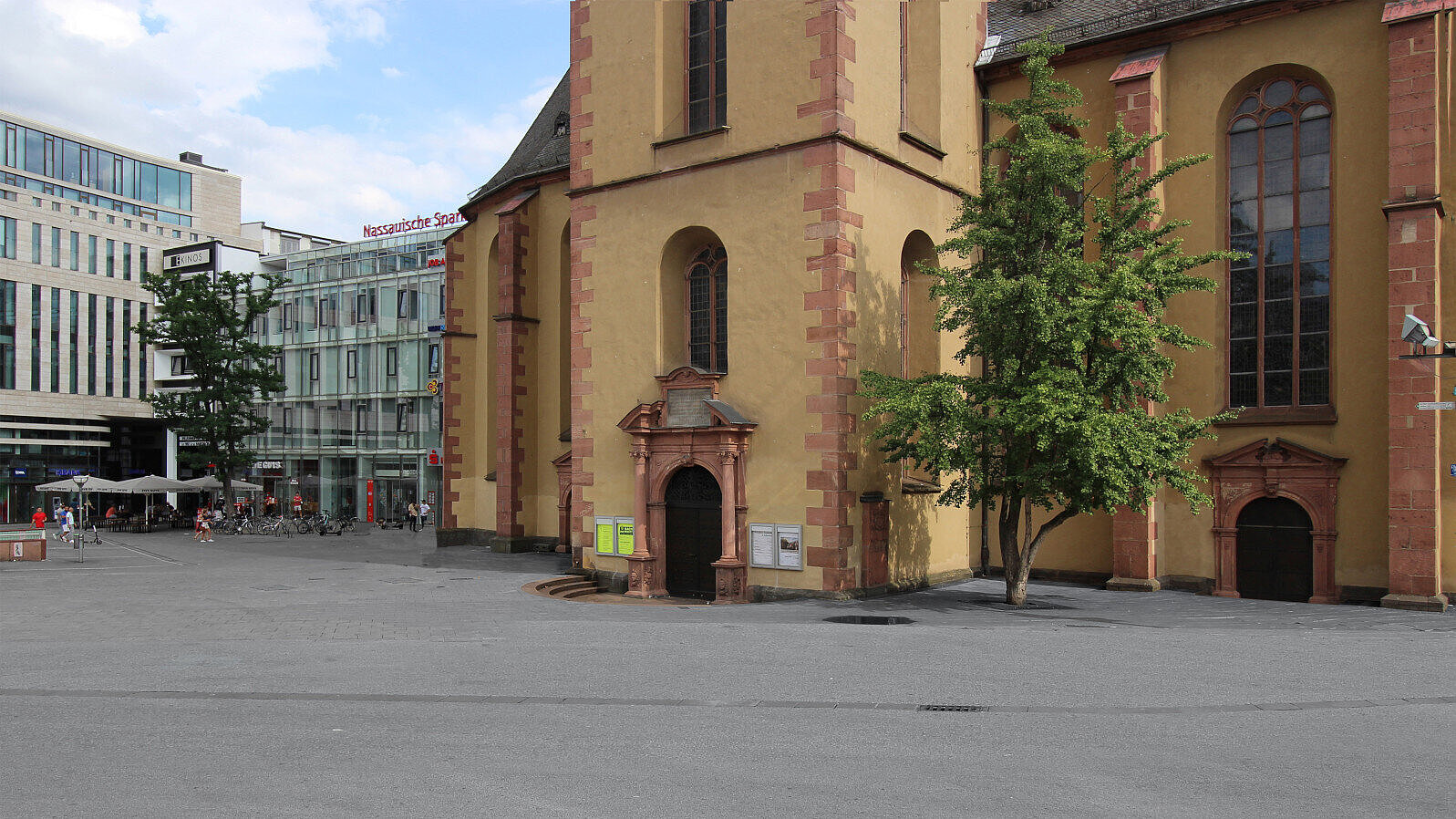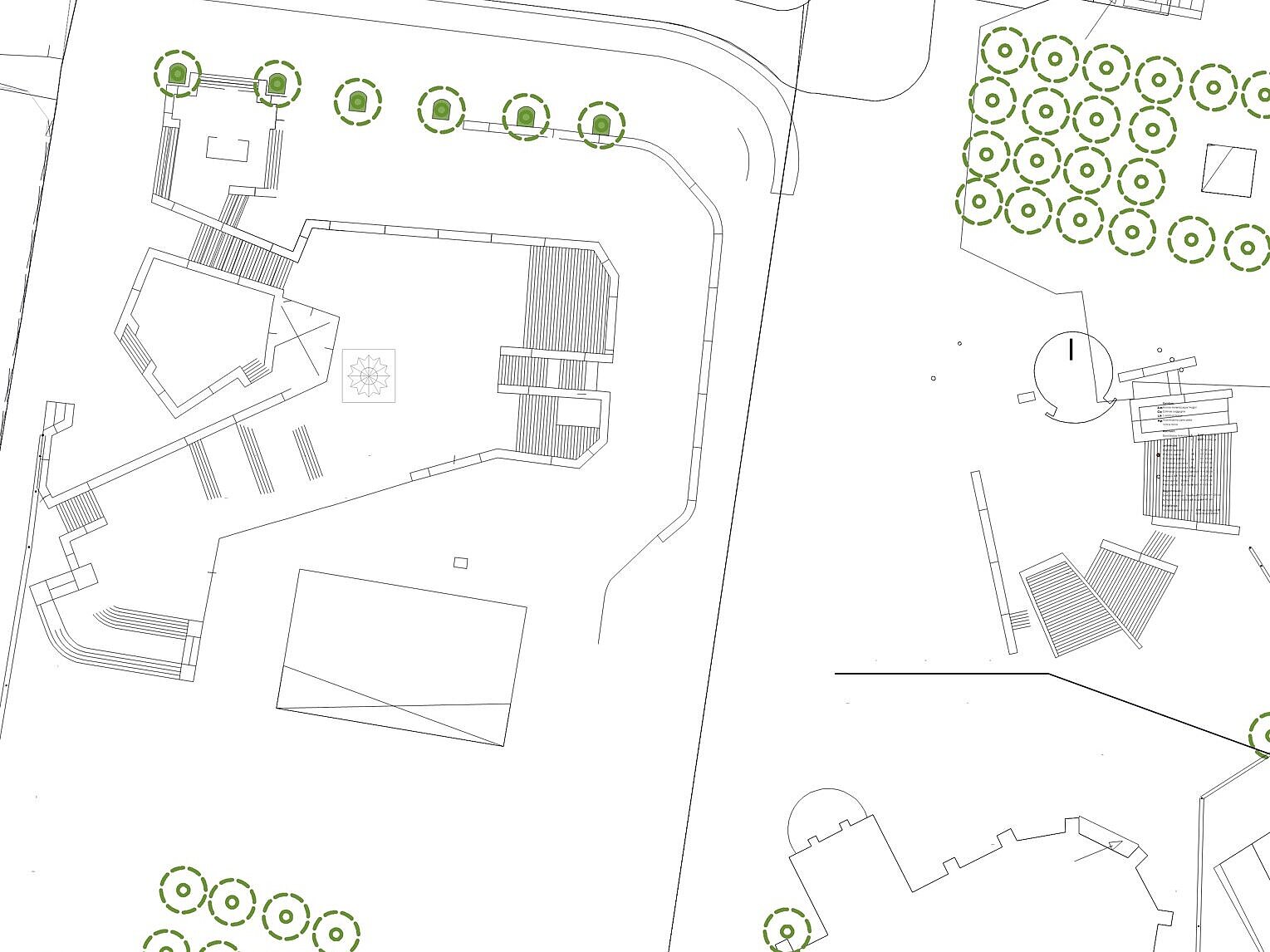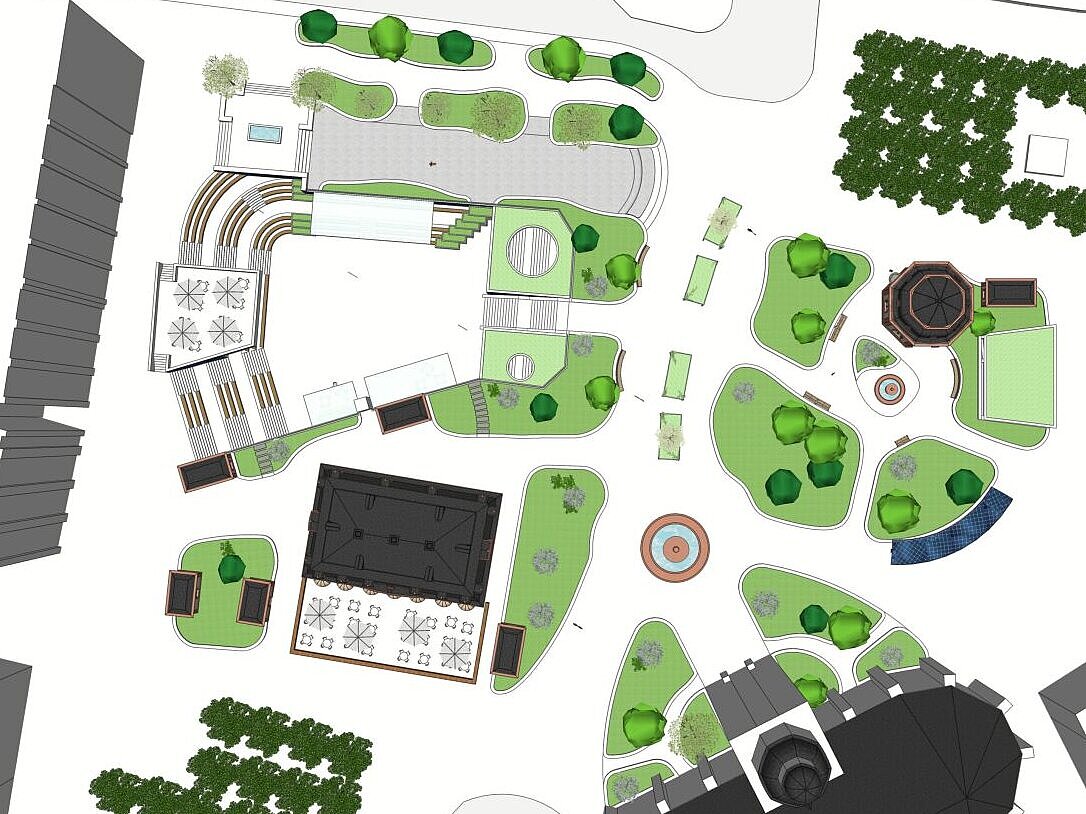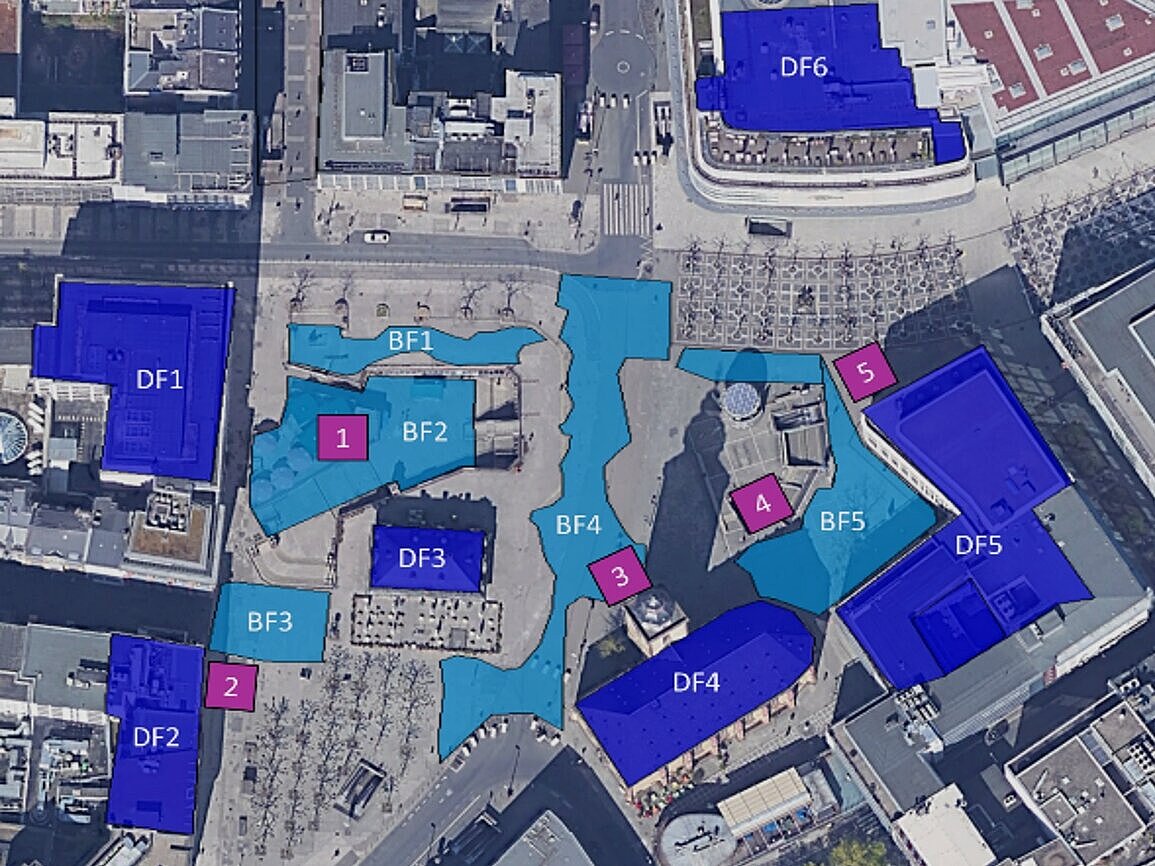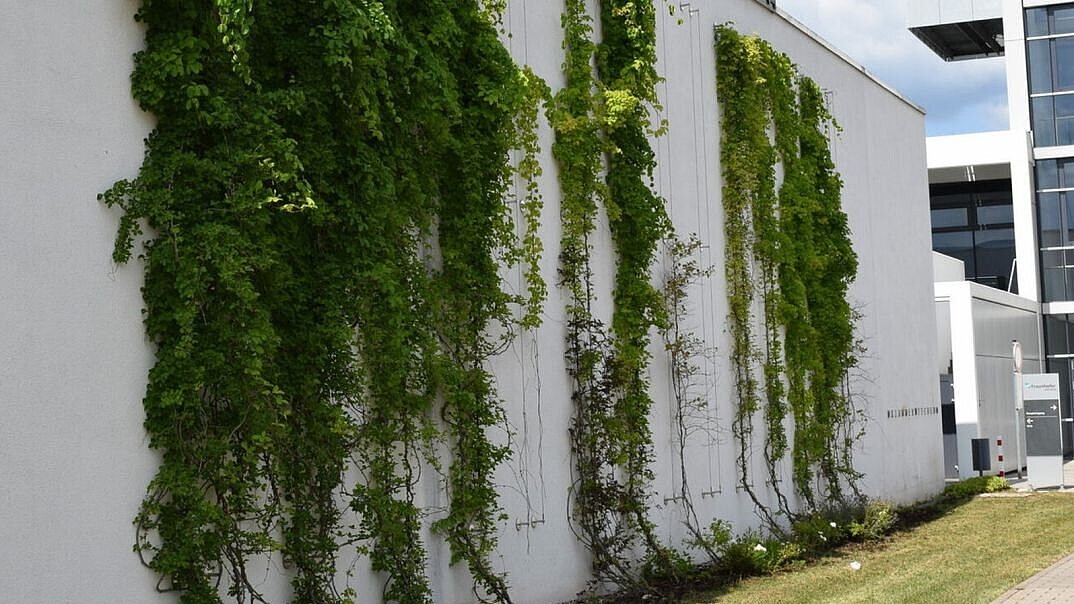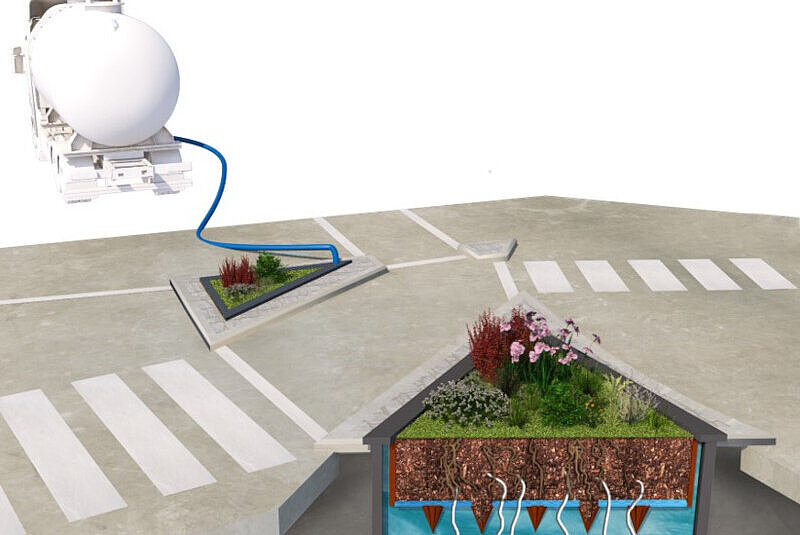Content: Valuable green spaces can be created by unsealing areas within Frankfurt's urban area
Thanks to the ring main, these areas can be well irrigated. In addition to the water source "ring main", rainwater from the surrounding buildings can also be collected in cisterns for the unsealed areas.
Where water cannot be supplied to more remote unsealed areas during dry periods by direct connection to the Frankfurt Bridge irrigation system, tankers can tap water from the ring main and transport it to the green spaces.
